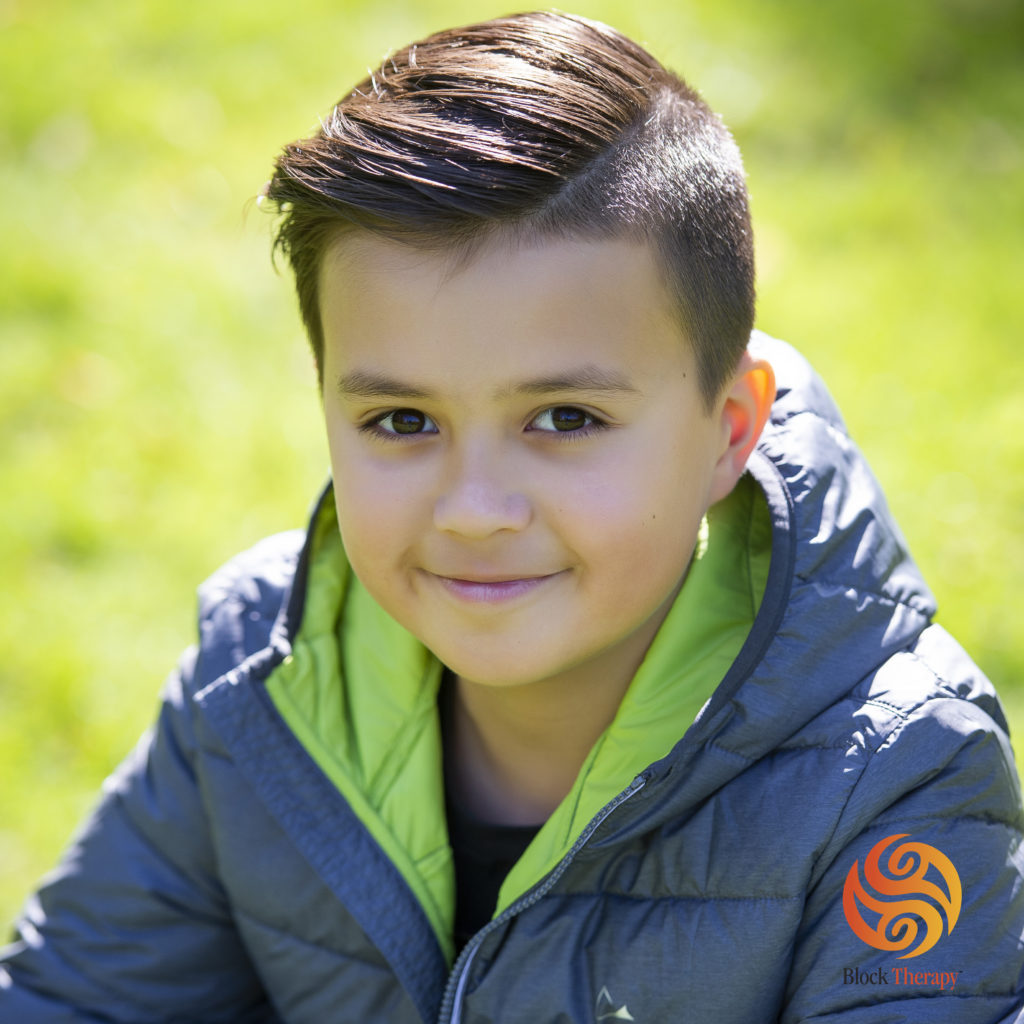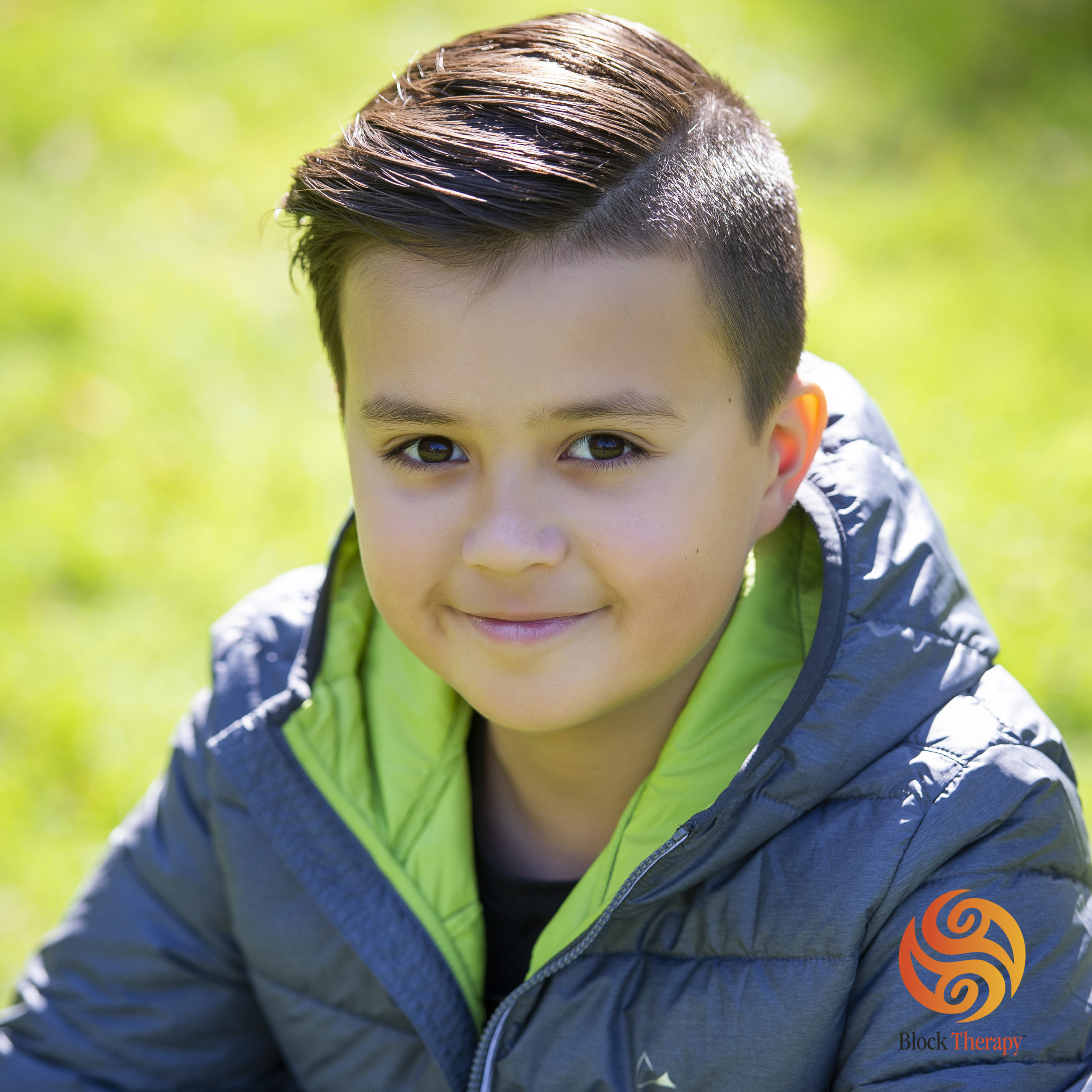Block Therapy and Children Part 2

For those of you who have brought life into the world, you now have a little one who will rely on you for everything for a while. This is a special time for you, and there are simple things you can do to ensure that your baby has a body that functions well. This also helps you, because a healthy baby sleeps well.
Today, many babies are born with incorrect breath. Their little bodies that require oxygen as the main nutrient to grow and thrive are markedly depleted, causing major issues right from day one, but consciously aware parents can help their babies develop breathing correctly from day one.
Good breathing is essential to sound growth and development. Because most of you having babies at this time grew up physically distorted by technology, your child will be handicapped when it comes to full and complete diaphragmatic breath. This shouldn’t be taken lightly, as all development from this point forward is dependent on the amount of oxygen each cell receives.
The good news is that because babies are light and adaptable, they can be carried around easily. Even better is the fact that the body wants to function as it is designed. This means that if we give a body what it needs to do its job, it easily integrates the work and creates positive habits to sustain its requirements. And with babies, their bodies naturally respond to any stimuli that will take them back to their roots.
The simple act of applying consistent, controlled, and balanced pressure into the rib cage will give the child the opportunity to reconnect with its diaphragmatic breath. No one realizes the significance of this. It means better sleep, digestion, and processing of all baby’s bodily functions . . . which in turn means better sleep for you!
Years ago I started working with a one year old girl. They believed she might have had a stroke in the womb. When I first met her, she wasn’t able to move at all on her own. She had never crawled or even rolled over from her back. My immediate suspicion on being told of her condition had been that she didn’t have any connection to her diaphragm.
It was so interesting because I could feel the lack of blood and oxygen flow in her tissue. Her legs felt spongy and dry, almost brittle. Also, from her working her muscles in the upper chest to breathe, her neck protruded forward and her eyes looked as though they were bugging out (this last due to the immense internal pressure inside her little body).
I worked with her for about a year and we made exciting gains. My focus was on getting her diaphragm to function so she could start to oxygenate her cells. In time, her body began to respond. Her appearance changed, her eyes grew smaller and her head began to migrate back to a more aligned position. As her diaphragm took over from her upper chest, a more relaxed flow was emerging.
It was also obvious from the texture of her legs that life was awakening in her cells and during our time together, she began to walk. A couple of years ago, her mom sent a picture of her, saying she was an active, happy little girl. There has been some learning impairment, but from the perspective of her initial state, the difference the work made to her body and resultant quality of life was like night and day.
As I have said, the technique is simple. The parents must learn how to activate the proper breath as the magic lies in the daily work. It requires little time, and virtually no skill; just knowing how to apply pressure to heat up the ribcage and release the diaphragm muscle. The body wants to function as it is designed, but if it is frozen, it can’t. As in starting the car on a cold day, sometimes you have to jumpstart the engine, then let it run awhile before you drive. A muscle in deep freeze is no different, and for a baby breathing with the muscles of the upper chest that is exactly the state of the diaphragm.
Check out our Super Block Kid, Finnley Tran
My experience working with block therapy has been amazing. I love that I am a part of an awesome team that heals the human body. Working right beside Deanna is a dream come true. I am excited to help improve kids lives by helping them learn to walk, stand, sit and breathe properly.
I am a newer student of block therapy but in this short period of time it has helped me grow, achieve and accomplish goals that I never knew I could obtain. It has changed my life for the better, imagine how it can change yours.
Finnley Tran
Fascia and Toddlers
Some parents may be reading this when their children are two to five years old -- not babies anymore, but not in a position to do Block Therapy themselves (there is a Block for Kids Program that I recommend you begin at about age six). For this younger age bracket, we offer a series that teaches parents how to align and open the ribcage for the child.
We must keep pace with a changing world. Parents who have grown up with technology are having kids with unprecedented physical challenges. If we can recognize this, we can take action to ensure them a healthy future. Otherwise, they will be older in their bodies than their parents — not a pleasant thought.
I have been encountering a growing number of toddlers with issues reflective of a misaligned ribcage – specifically, problems with their hands, like cysts and trigger finger. I never used to see this in patients at such a young age.
The diaphragm is the foundation of the ribcage and when functioning properly, it moves up and down in the core. This creates a strong platform for the shoulder joints, head, and neck; when the breath is strong, the foundation is balanced and reasonably symmetrical. Time after time, meeting these kids, I can see immediately that their ribcages are not aligned. As with an accordion, when one side compresses, the other balloons. If this is the actual alignment of the child’s ribcage, the foundation for the shoulder blades will be off, causing each arm to track differently.
When the shoulder blades can’t properly track, it affects the alignment all the way down the chain to the fingertips. It’s one thing if this happens once we have fully grown; it’s another if your baby or toddler is that far out of alignment to start. Growing up misaligned makes for a far more challenging life path.
As with babies, it’s all about melting through the adhesions in the ribcage. The body wants to breathe from the right place. No skill is required to initiate this process; just a knowledge of how to position the ribcage and how long to maintain pressure to get the desired heating effect. This, in turn, changes the way the shoulders, arms and hands move and function as well as improving blood and oxygen flow to the head, neck, brain, and everything else in that region.
Five minutes per day is all it takes to change your child’s life. This sounds dramatic; and it is. We don’t see changes happening if they are constant and gradual. If you lost twenty pounds over the course of a year, you likely wouldn’t see it until someone else mentioned it. Because you see your kids every day, you don’t notice how different they look compared to kids when you were a child.
But there is a blessing in disguise here because the earlier a person embraces the conscious diaphragmatic breath, the better life will be. Helping your child make this a habit is a gift whose value is beyond measure.
Now in the membership are two videos to guide you to decompress your kids’ fascia, one for toddlers and one for kids.
Next Week:







Responses